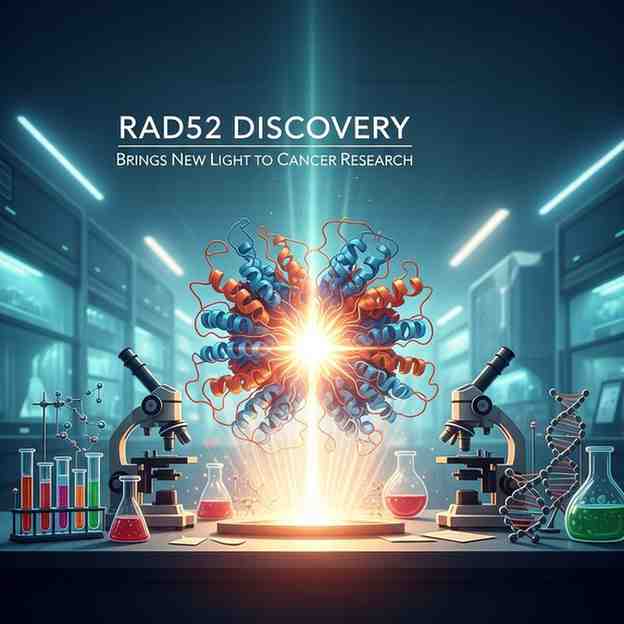
- A recent study led by researchers at the University of Iowa has uncovered a previously unknown structure of the DNA repair protein RAD52 , offering new avenues for targeted cancer therapies. Published in Nature on April 2, 2025 , the research provides insight into how RAD52 stabilises damaged DNA during replication, making it a promising drug target for cancers with defective DNA repair mechanisms.
RAD52 and DNA Repair Deficiencies
- Certain cancers, including breast, ovarian, and some brain tumours , often carry mutations in DNA repair genes such as BRCA1 and BRCA2 . These mutations impair the cell’s primary repair mechanisms, forcing cancer cells to rely on alternative pathways for survival. RAD52 is a key protein in these compensatory pathways, allowing cancer cells to replicate even with damaged DNA. Researchers suggest that inhibiting RAD52 could selectively kill cancer cells while sparing healthy ones, making it a highly targeted approach.
Discovery of a Unique Double-Ring Formation
- Using cryo-electron microscopy (CryoEM) , the team discovered that RAD52 forms a double-ring, spool-like structure , with each ring composed of 11 protein subunits . This configuration enables RAD52 to bind all three arms of the DNA replication fork, protecting the DNA from interference by motor proteins. This structural insight is unprecedented and reveals how RAD52 maintains DNA stability under stress, highlighting new sites for potential drug targeting.
Implications for Drug Design
- Cancer cells with BRCA mutations rely heavily on RAD52, unlike normal cells that can function without it. This selectivity makes RAD52 an ideal candidate for therapeutic intervention. Researchers have already identified small molecules that bind to RAD52, and the new structural data will help refine these compounds for precise and effective anti-cancer drugs . RAD52 inhibitors could function similarly to PARP inhibitors , expanding treatment options for tumours resistant to current therapies.
Collaborative Research and Future Directions
- The study involved collaboration with Pietro Pichierri from Italy’s Istituto Superiore di Sanità and Ashley Spies from the University of Iowa College of Pharmacy. Combining biochemical analysis, single-molecule imaging, and computational modelling, the team decoded RAD52’s behaviour, revealing how its double-ring complex protects replication forks. This breakthrough provides a pathway to develop targeted, less toxic cancer therapies , representing a major step forward in oncology research.
Key Facts for Exams:
-
RAD52 is crucial for DNA repair in BRCA1/2-mutated cancers .
-
Structure: Double-ring formation with 11 subunits per ring .
-
Research: University of Iowa, published in Nature , April 2, 2025.
-
Funding: U.S. National Cancer Institute (NIH grants R01 CA232425, P30 CA086862) .
-
Potential: Basis for targeted RAD52 inhibitors for cancer therapy.
Month: Current Affairs - November 03, 2025
Category: Science and Technology